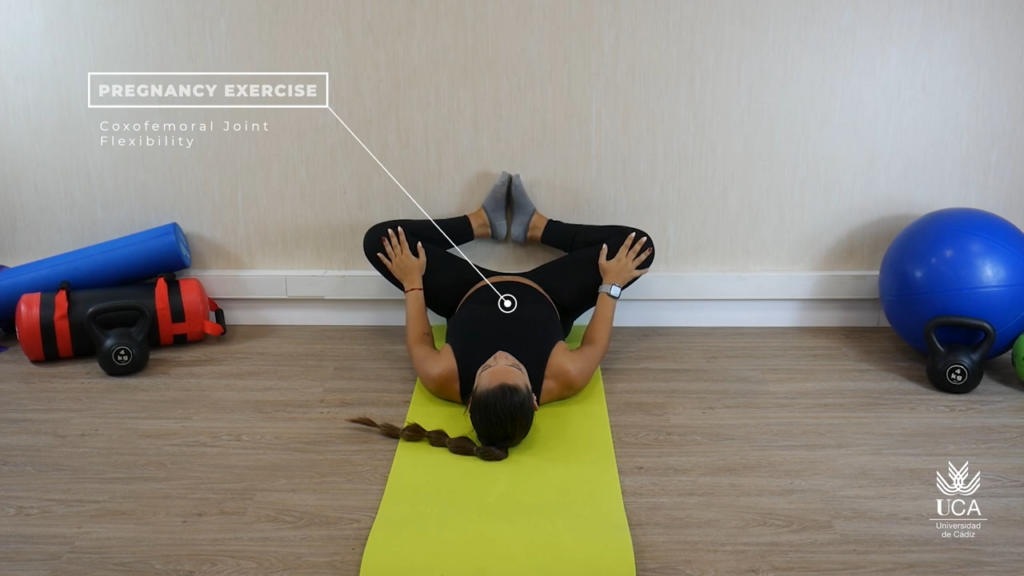Diastasis recti abdominis (DRA) is most common in pregnant women, which is caused by hormonal changes during pregnancy, increased uterine size, pelvic anterior tilt and increased abdominal pressure. In addition, the following factors may predispose to the occurrence of rectus abdominis muscle:
- caesarean section,
- multiple pregnancy,
- fetal macrosomia,
- genetically determined defects in collagen structure,
- significant weight loss occurring spontaneously or following bariatric or abdominal surgery,
- obesity,
- diabetes.
An increase in IRD distance decreases the strength of the rectus abdominis muscle and does not usually cause pain at rest. However, during physical activity, a characteristic bulging of the abdominal wall may occur due to an increase in abdominal pressure. For this reason, DRA may be associated with the occurrence of umbilical and supra-abdominal hernias. The occurrence of DRA can also cause:
- bad posture,
- restrictions during physical activity,
- back pain,
- lumbopelvic pain,
- dysfunction and weakness of the pelvic floor muscles, urinary incontinence,
- reduced quality of life.
Women with DRA may experience a fear of movement and therefore avoid movement. They may also be dissatisfied with their bodies. As a result, many women restrict their daily life and physical activity.
Some studies, however, contradict these findings and do not confirm differences regarding lumbopelvic area pain in women with and without DRA, associations of DRA severity with health-related quality of life impairment, impairment of abdominal muscle strength and do not find weaker pelvic floor muscles and pelvic floor dysfunction in women with DRA after childbirth.
The topic of the consequences of diastasis recti abdominis still requires further research.
Antonina Kaczorowska
References:
- Benjamin DR, Frawley HC, Shields N, van de Water ATM, Taylor NF. Relationship between diastasis of the rectus abdominis muscle (DRAM) and musculoskeletal dysfunctions, pain and quality of life: a systematic review. Physiotherapy. 2019;105(1):24-34.
- Bø K, Hilde G, Tennfjord MK, Sperstad JB, Engh ME. Pelvic floor muscle function, pelvic floor dysfunction and diastasis recti abdominis: Prospective cohort study. Neurourology and Urodynamics. 2017;36(3):716-721.
- Braga A, Caccia G, Nasi I, et al. Diastasis recti abdominis after childbirth: Is it a predictor of stress urinary incontinence? Journal of Gynecology Obstetrics and Human Reproduction. 2019;101657.
- Candido G, Lo T, Janssen PA. Risk factors for diastasis of the recti abdominis. Journal of the Association of Chartered Physiotherapists in Woman’s Health. 2005; 97: 49-54
- Cheesborough JE, Dumanian GA. Simultaneous prosthetic mesh abdominal wall reconstruction with abdominoplasty for ventral hernia and severe rectus diastasis repairs. Plastic and Reconstructive Surgery. 2015; 135(1): 268-276.
- Eriksson Crommert M, Petrov Fieril K, Gustavsson C. Women’s experiences of living with increased inter-recti distance after childbirth: an interview study. BMC Womens Health. 2020;20(1):260.
- Fei H, Liu Y, Li M, et al. The relationship of severity in diastasis recti abdominis and pelvic floor dysfunction: a retrospective cohort study. BMC Womens Health. 2021;21(1):68.
- Fernandes da Mota PG, Pascoal AG, Carita AI, Bø K. Prevalence and risk factors of diastasis recti abdominis from late pregnancy to 6 months postpartum, and relationship with lumbo-pelvic pain. Manual Therapy. 2015;20(1):200-205.
- Gitta S, Magyar Z, Tardi P, Füge I, Járomi M, Ács P, Garai J, Bódis J, Hock M. Prevalence, potential risk factors and sequelae of diastasis recti abdominis. Orvosi Hetilap 2017;158(12):454-460.
- Michalska A, Rokita W, Wolder D, Pogorzelska J, Kaczmarczyk K. Diastasis recti abdominis – a review of treatment methods. Ginekologia Polska. 2018;89(2):97-101.
- Parker M, Millar L, Dugan S. Diastasis Rectus Abdominis and Lumbo-Pelvic Pain and Dysfunction-Are They Related? Journal of Women’s Health Physical Therapy. 2009; 33(2):15-22.
- Sperstad JB, Tennfjord MK, Hilde G, Ellström-Engh M, Bø K. Diastasis recti abdominis during pregnancy and 12 months after childbirth: prevalence, risk factors and report of lumbopelvic pain. British Journal of Sports Medicine. 2016;50(17):1092-1096.
- Spitznagle TM, Leong FC, Van Dillen LR. Prevalence of diastasis recti
abdominis in a urogynecological patient population. International Urogynecology
Journal and Pelvic Floor Dysfunction. 2007;18(3):321–328. - Wu L, Gu Y, Gu Y, et al. Diastasis recti abdominis in adult women based on abdominal computed tomography imaging: Prevalence, risk factors and its impact on life. Journal of Clinal Nursing. 2021;30(3-4):518-527.




